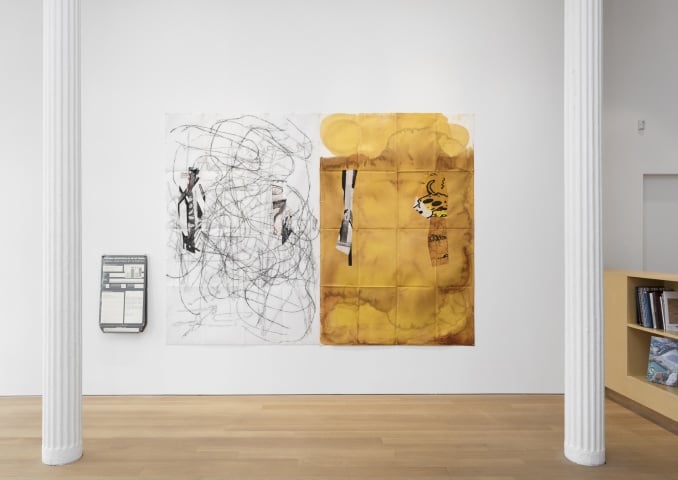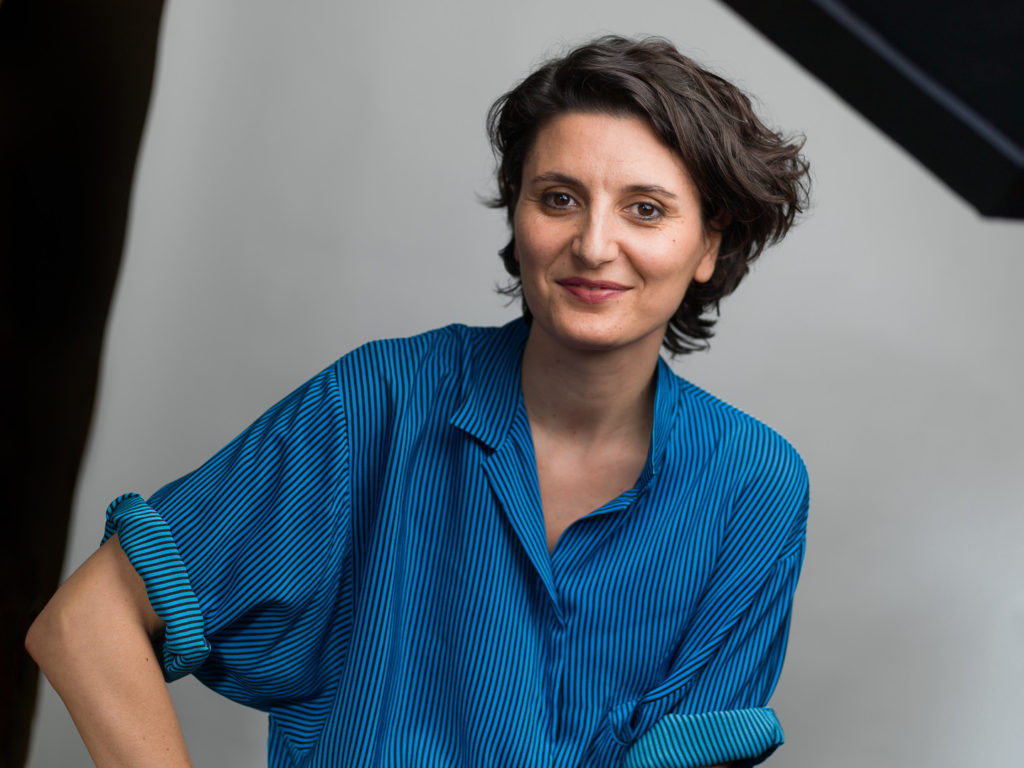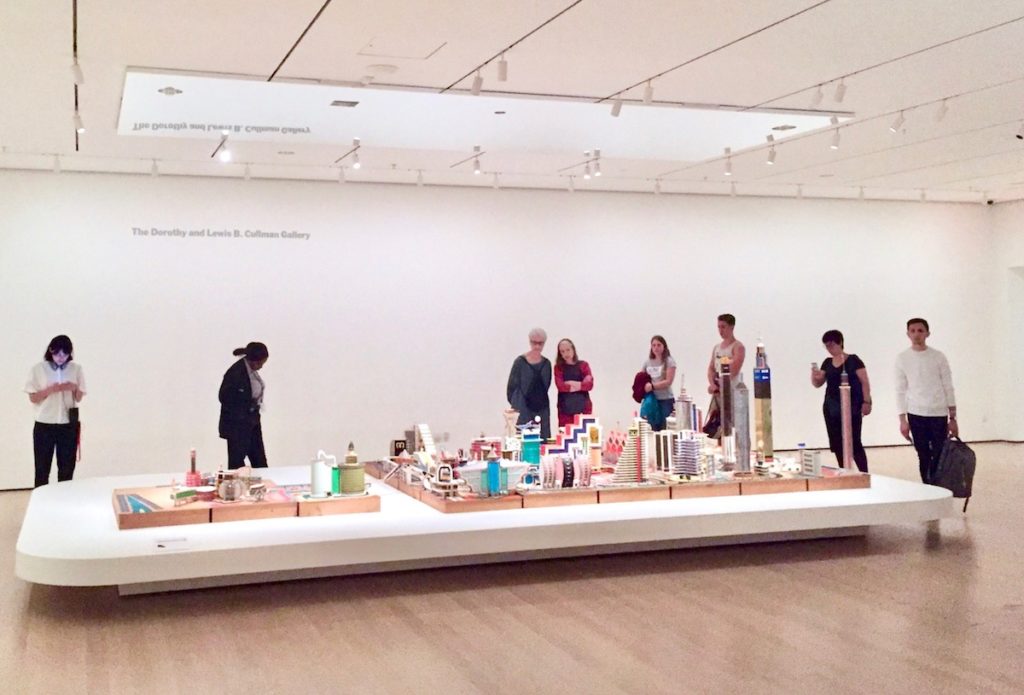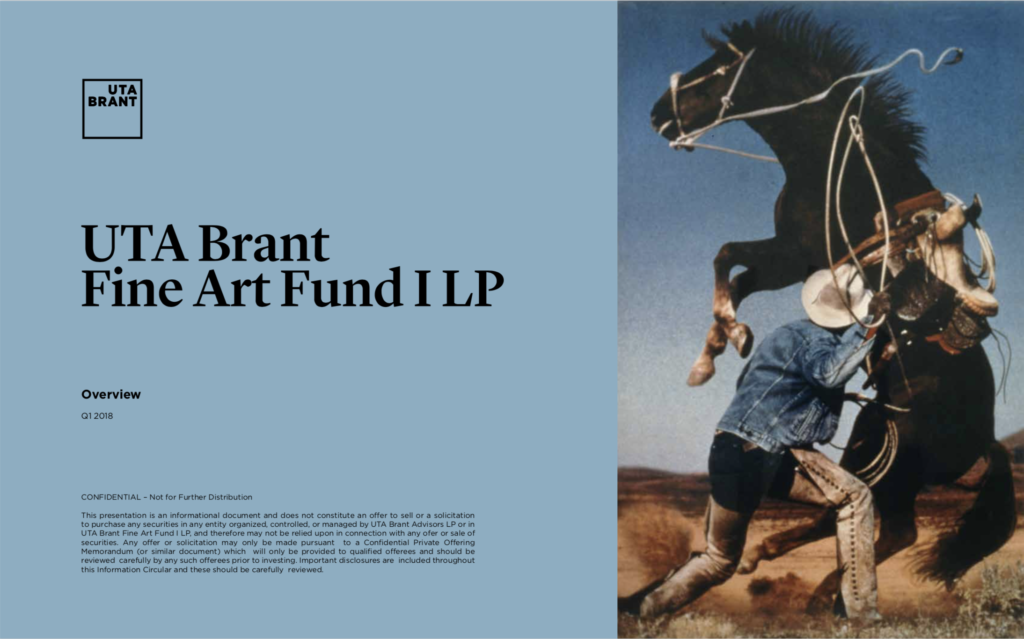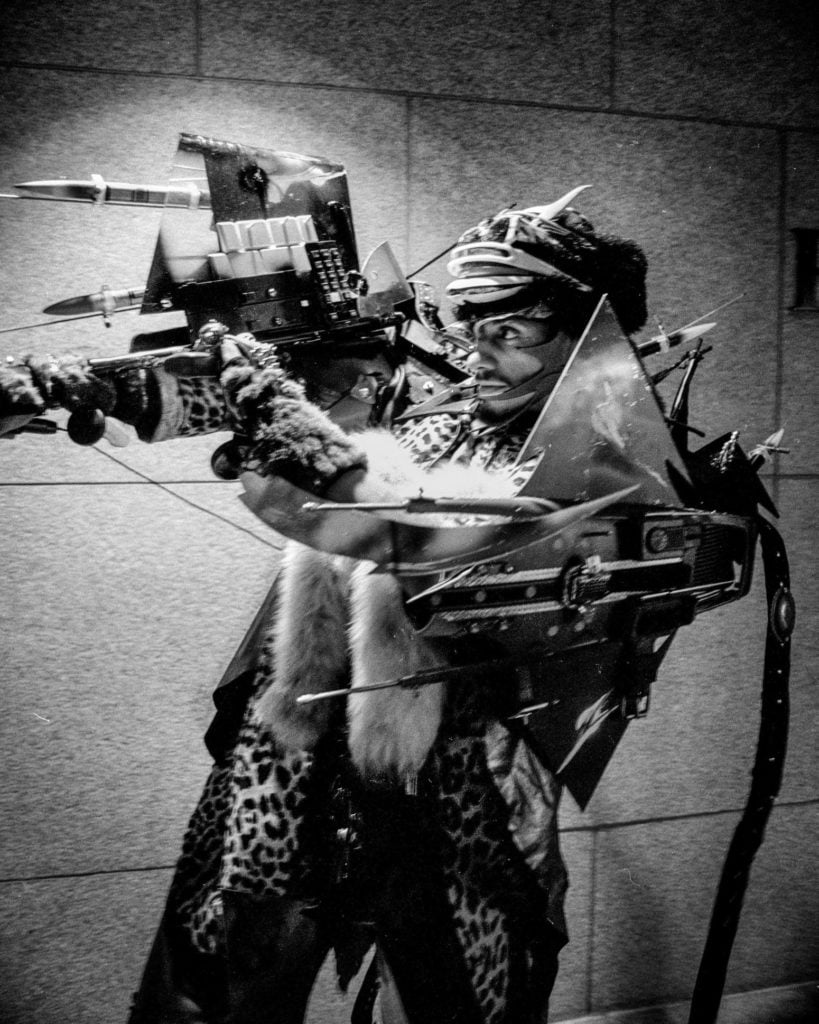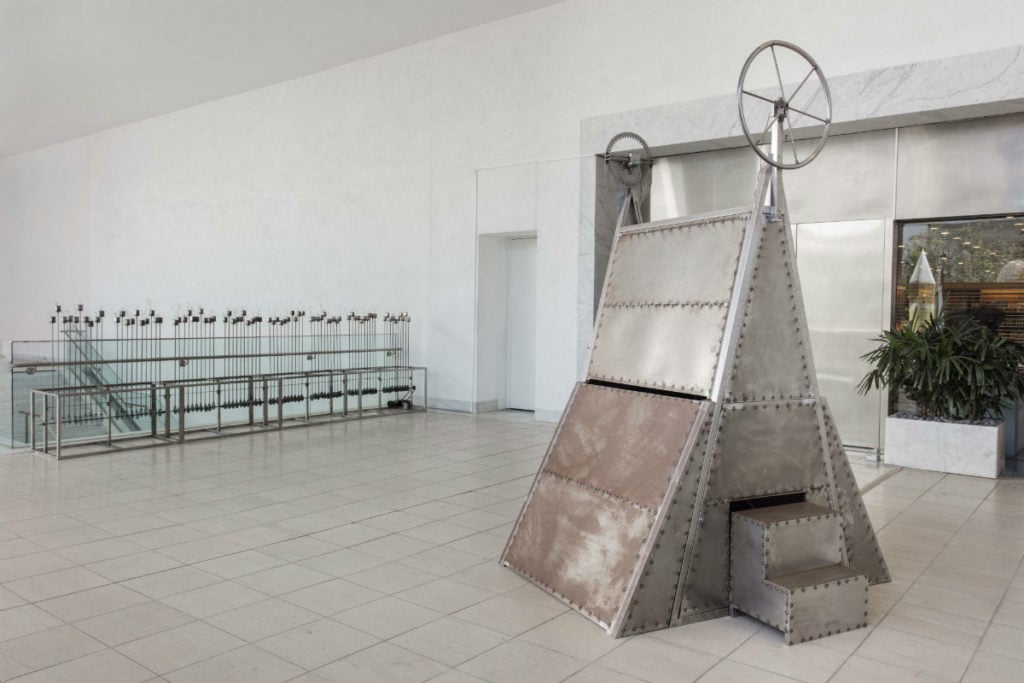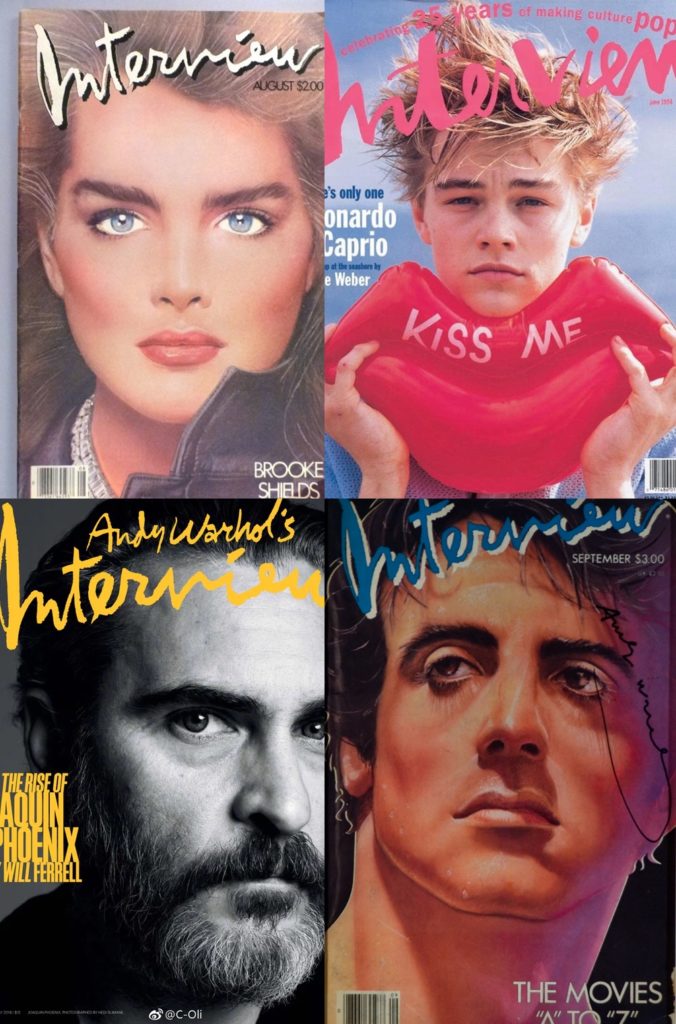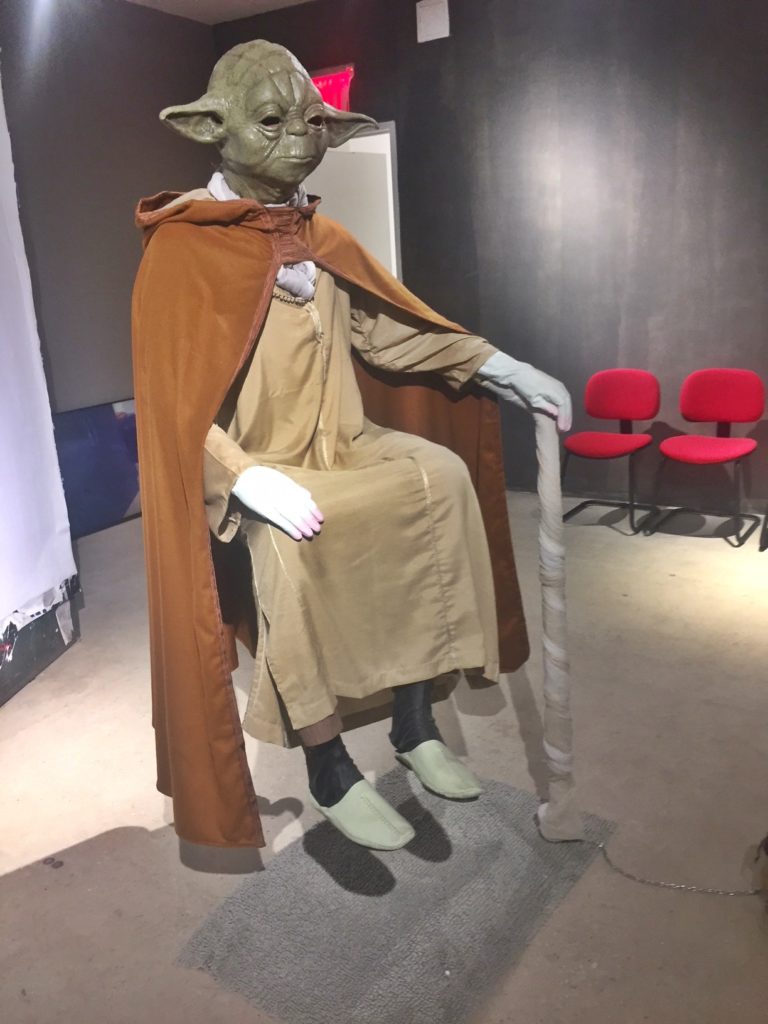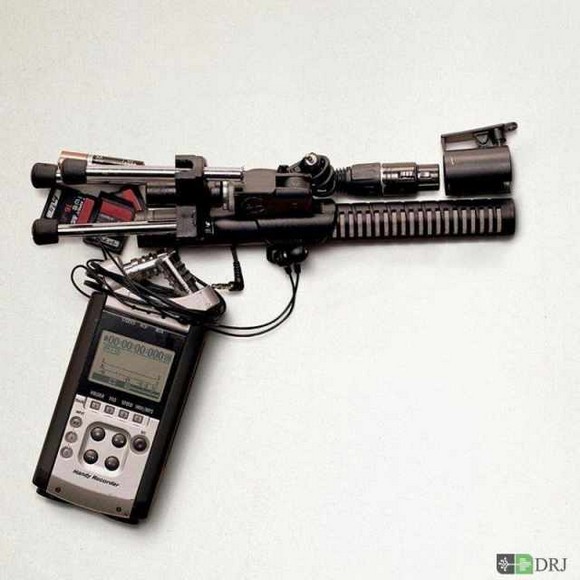As Dan Colen got out of his Range Rover, parked in front of a tasteful Italian restaurant on Manhattan’s Upper East Side, it was hard to imagine that just a decade ago he was one of the preeminent bad boys in New York’s downtown art scene, along with buddies Dash Snow and Ryan McGinley.
Today, Colen cuts a low-key figure. He leads a more or less bourgeois life, dividing his time between his studio in Brooklyn and the upstate New York farm he purchased in 2011. The only remaining evidence of his tumultuous youth are a few tattoos that peek out from beneath his signature Adidas track jacket.
Colen, now firmly entrenched in his mid-career phase, is enjoying a surge of renewed interest in his work. He recently joined Lévy Gorvy Gallery in New York and is currently the subject of a show at Oslo’s Astrup Fernley Museum.
artnet News met up with Colen at his recent exhibition at Lévy Gorvy, titled “Mailorder Mother Purgatory,” his first solo show since joining the gallery last spring. Split into three levels of the Upper East Side gallery, the show opened with his “Mailorder” series of large-scale paintings appropriated from J. Crew catalogs; followed by “Mother,” new cartoonish landscape paintings inspired by Bambi; and finally his “Purgatory” series of hazy abstract works.
We spoke with Colen about the development of his career, how his personal life infuses his work, and a surprise foray into performance art.
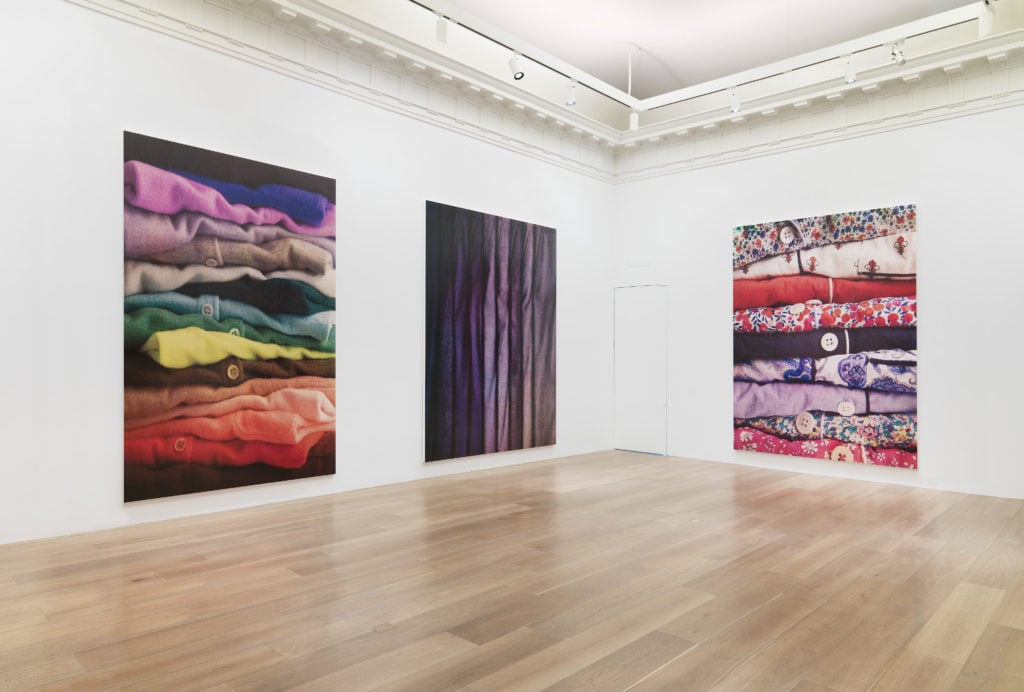 http://news.artnet.com/app/news-upload/2018/05/Colen-Install-1st-floor_0121-EDIT-300x203.jpg 300w, http://news.artnet.com/app/news-upload/2018/05/Colen-Install-1st-floor_0121-EDIT-50x34.jpg 50w" sizes="(max-width: 1024px) 100vw, 1024px">
http://news.artnet.com/app/news-upload/2018/05/Colen-Install-1st-floor_0121-EDIT-300x203.jpg 300w, http://news.artnet.com/app/news-upload/2018/05/Colen-Install-1st-floor_0121-EDIT-50x34.jpg 50w" sizes="(max-width: 1024px) 100vw, 1024px">Installation view of “Dan Colen: Mailorder Mother Purgatory” at Lévy Gorvy. Courtesy of Lévy Gorvy, photo: Tim Nighswander.
Your body of work spans such a wide variety of mediums and materials. When someone says “Dan Colen,” there isn’t a particular type of image that comes to mind. How have you been able to reinvent yourself and maintain a certain level of recognition throughout your career?
I think the basis of what I’m trying to do is exploration, and so to stay within one style, medium, or theme would defy that. My focus is always on trying to explore new territory. Starting my career with a show of photorealistic painting really made it clear to me that both the audience and the art world mechanism really wants to define you. It’s easier to absorb, it’s easier to sell, it’s easier to show, and it’s easier to talk about. Since there are so few photorealists, the reaction to the show was so off base from what I was hoping to communicate that I realized I would have to make it clear if my work wasn’t going to be about only one thing. It’s been a bigger struggle than I imagined to open up a dialogue about this diverse body of work.
I think only now am I finally getting to that point in my career where I feel like people are searching for the common thread. A few years back people were really trying to hold on to single things. They would say, “Well he does a lot of different things, but his work is really about this,” you know? I think that only very recently have people been interested in trying to consider the constellation of different approaches and understand it as an ever-developing body of work.
So what do you see as the common thread?
The most general answer to that is the search, the exploration. Seeking is the basis of all my work. I love mastering a new technique, I love collaborating with craftsmen who have mastered things that I’m less comfortable with, and I just really love making things and handling materials and learning about technologies and figuring it all out.
Obviously I don’t hesitate to talk about the personal nature of my work, so I use myself. I use a lot of other things as springboards to explore different themes too, but my life and my experiences are central. Art history is so important to me, and the world I’m surrounded by is so important to me, my day-to-day life is really important to me, as is my lineage, the people that I come from, and my immediate family. The work comes from a lot of different places, but obviously my story and my experiences are at the core of it.
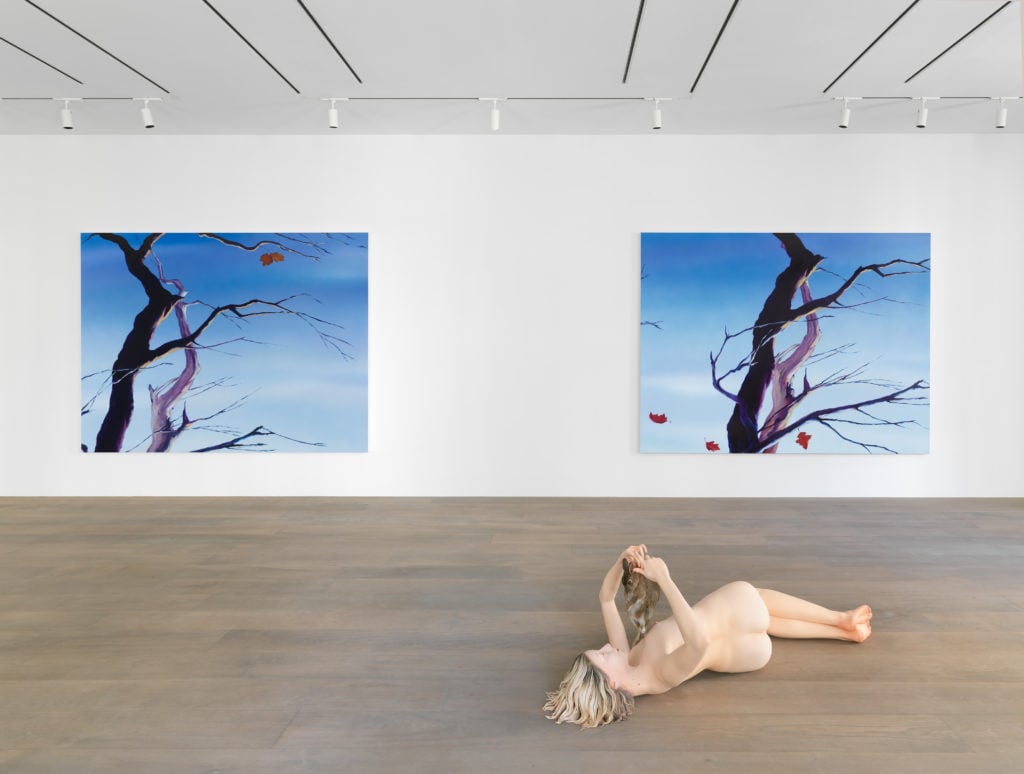 http://news.artnet.com/app/news-upload/2018/05/Colen-Install-2nd-floor_0034-EDIT-300x227.jpg 300w, http://news.artnet.com/app/news-upload/2018/05/Colen-Install-2nd-floor_0034-EDIT-50x38.jpg 50w" sizes="(max-width: 1024px) 100vw, 1024px">
http://news.artnet.com/app/news-upload/2018/05/Colen-Install-2nd-floor_0034-EDIT-300x227.jpg 300w, http://news.artnet.com/app/news-upload/2018/05/Colen-Install-2nd-floor_0034-EDIT-50x38.jpg 50w" sizes="(max-width: 1024px) 100vw, 1024px">Installation view of “Dan Colen: Mailorder Mother Purgatory” at Lévy Gorvy. Courtesy of Lévy Gorvy, photo: Tim Nighswander.
What I think is interesting about the show at Lévy Gorvy is that it binds together a lot of aspects of your work. An 2007 New York Magazine article about you, McGinley, and Snow described you collectively as “Warhol’s children.” I see you living up to that label here because I think one part of the show is about consumerism, another has a melancholy, emotive side to it, and the final part is experimental and weird.
I think that’s a nice way of seeing the three different levels, although I do hope that a romanticism comes out of all of it. The show started as this formal investigation into consumerism and Warhol, and shadow paintings were all a big part of that. I realize now that it’s not good to try to jam everything in there, and I think as a young artist that was always my goal, because I really wanted to make sure that everybody understood the complete extent of my work, and I wanted the audience to fully grasp the diversity of the different things that I do. I realized that this can be overwhelming and a lot of times there isn’t a thread that’s present when I put it all together, and so over the last few years I’ve made sure to give certain things more focus.
I was just fortunate enough to put together this really ambitious show in London that represented 15 years of my work. It was there, for the first time, that I had the time and space to think about creating a narrative for the different bodies of work. I realized that I’ve been very frustrated with a lot of my work’s interpretation, and with the audience’s understanding of it over the years. But as I mature, I realize that I wasn’t taking any responsibility for trying to explain the web of work. Really it starts with me, and I can’t just dump things out there and expect people to connect the dots. It doesn’t necessarily have to be explained in words, but in thoughtful presentations of the work.
How has your work evolved from the start of your career to where it is now?
I think that this idea of figuration and abstraction is very important. Looking back at the last 15 years, I think material is the way I investigated and tried to find a balance within painting. The first works that I showed were very figurative. I was working with a photorealist style and I think that I quickly recognized that the ideas I was trying to explore were being ignored because of people’s relationship to photorealism, which is such a specific genre that so few people are working in, and I think it cut short the interpretation of my work.
I’m trying to sum up many years, but what I did is I really moved away from figuration by playing with the idea of illusionism, trying to trick the audience into seeing one thing and understanding it as another. I think the “Birdshit” paintings and the “Gum” paintings represented this pivot. The “Birdshit” series is a very, very rigorous trompe l’oeil, it’s not only able to replicate the image of birdshit, but it also replicates its three-dimensional qualities. So although it’s paint on canvas, it’s really a trompe l’oeil sculpture of birdshit. It just happens to be that the material is oil paint.
From there I started experimenting with gum, and that was almost the inverse of [the “Birdshit” paintings] where I was using a real figurative material—a piece of gum on the floor is a real thing, not an abstraction. To put those on a canvas, and to use gum as real material, at first suggests abstract painting, but then you see it and understand it as a material that corresponds to the idea of trompe l’oeil.
So this show is really a return to image and a return to figurative oil painting and image-based work. These paintings that I started in 2010, in the midst of my exploration of non-traditional materials, are my bridge back, and I’m using image as the core starting point, although they do have abstract elements. I arrived back at image so I could have a new reverence for the material and the process.
Lévy Gorvy is known for dealing a lot in the secondary market, working with estates, and generally with an older generation of artists. What made you want to work together?
The relationship started around the time the gallery was coming into this new form when Brett [Gorvy] joined. I know Brett and Dominique [Lévy]’s histories separately, but I don’t think any of us know what it’s morphing into.
I loved the building and I loved the dialogue I was having with the two of them. We were talking a lot in the time leading up to the show, talking about the possibility of it, and once we committed to doing it, talking about what shape it could take. I think the work can be properly experienced in this type of architecture, and I think it was the perfect environment for these four bodies of work because it allows them all to be in dialogue with each other, but also for each to have their space.
Appearing in different contexts is really important, and working with different people. I do think that my work relates to a lot of the artists and estates that the gallery works with. It’s always nice to shake it up and surprise people, and to be forced to think about things from scratch.
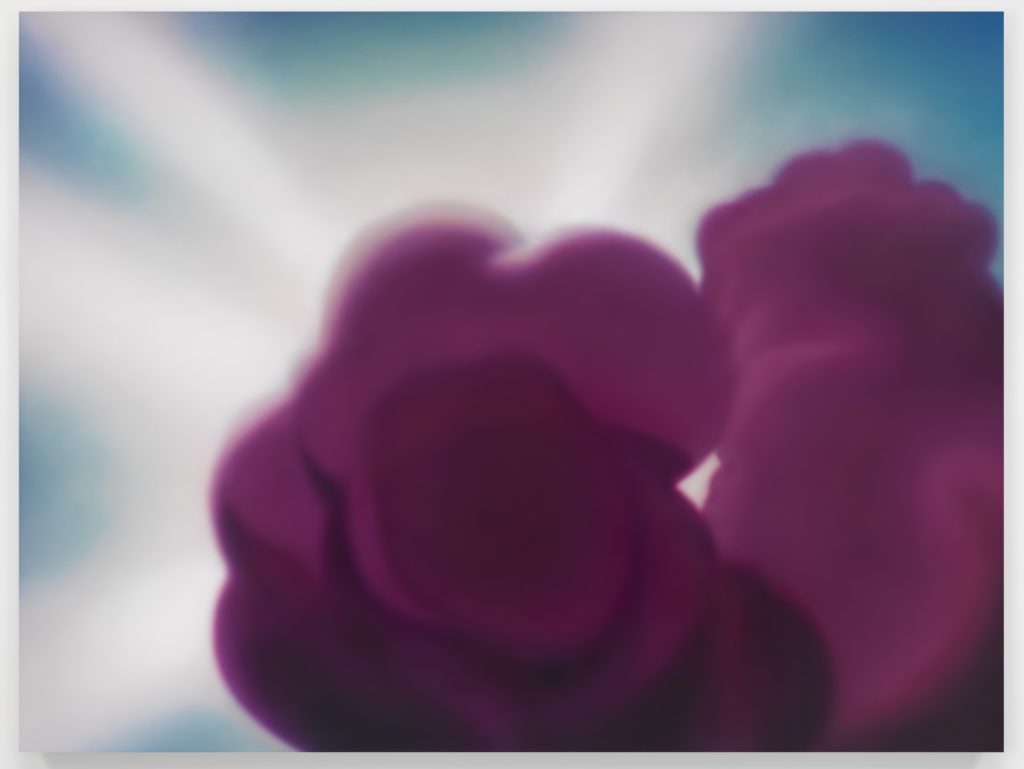 http://news.artnet.com/app/news-upload/2018/05/Colen_Purgatory_2017-2018-1031crop-300x225.jpg 300w, http://news.artnet.com/app/news-upload/2018/05/Colen_Purgatory_2017-2018-1031crop-50x38.jpg 50w" sizes="(max-width: 1024px) 100vw, 1024px">
http://news.artnet.com/app/news-upload/2018/05/Colen_Purgatory_2017-2018-1031crop-300x225.jpg 300w, http://news.artnet.com/app/news-upload/2018/05/Colen_Purgatory_2017-2018-1031crop-50x38.jpg 50w" sizes="(max-width: 1024px) 100vw, 1024px">Dan Colen’s Purgatory 1031 (2017–2018). © Dan Colen, 2018. Courtesy of Lévy Gorvy, photo: Tim Nighswander.
What’s next for you?
While I was working on the “Mother” and “Purgatory”series I was also working on another body of paintings that I see as the flip side of the same coin as the “Purgatories.” I call them “Desert” paintings. The “Purgatories” are abstract and ambiguous, they’re pictures of skies, while the “Desert” series are pictures of deserts and I use the paint as a way to explore that theme. In the “Purgatory” series, I sprayed the oil paint to create these borderless paintings with no edges, and no definable composition where everything bleeds into everything else, but the desert paintings are hard-edge abstractions where I use the paint in a much denser way. So that’s a show I’ll be doing with Gagosian in Los Angeles in November, and it will complete the last few years of painting where I’ve been transitioning out of the non-traditional explorations of materials back into oil painting.
From there I’ll be really focused on the “Mother” paintings. My studio hasn’t been as focused on a single body of work since I was making paintings by myself at the very beginning of my career. I’m excited about this level of focus on a body of work. These are some of my most image-based, most classical paintings, and it’s nice to come back to that 10 years later.
As another thing, I’ve been doing more and more performative works and my interest has gone more and more toward that. I’ve been working on really ambitious performances that almost take the form of classical theater. As I’m working on these oil paintings, I’ll also be developing that.
So another new direction?
Yeah, it’s really about material. The idea of bringing in time and space as materials and handling those with my ideas really excites me. It’s really about interacting with actors and dancers and trying to instill my ideas in them, like I do in the paint or the sculptural material and I’ll see where that goes.
The post ‘The Art World Mechanism Really Wants to Define You’: Onetime Bad-Boy Artist Dan Colen on Achieving Maturity in His Work appeared first on artnet News.

ایده ها برای استارت آپ موجب رونق کسب و کارهای اینترنتی
آینده / استارت آپ

استارتآپها ادبیات بازار سرمایه را بلدند؟
استارت آپ

صدور تاییدیه دانش بنیانی شتابدهنده صدر فردا
اخبار / استارت آپ

اپلیکیشن شارژاپ
گوناگون / استارت آپ / رپرتاژ آگهی / بازتاب

جذابترین ایدههای B2B در سال 2020
استارت آپ

تعریف استارت آپ startup
دانشنامه / استارت آپ / مقاله

۱۰ استارتاپ که بدون سرمایه به سوددهی رسیدند
استارت آپ

ایده ها و پیشنهاد برای استارت آپ در سال جدید
راهکارها و ترفند ها / استارت آپ
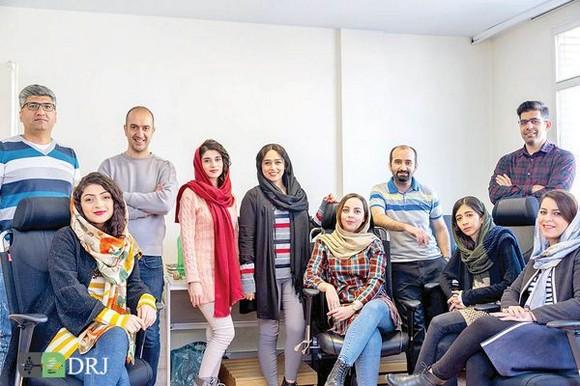
استارتآپ ایرانی؛ مرجع اول زنان افغان
استارت آپ

شروع یک کسب و کار نوپا پلتفرمی
استارت آپ

برنامه شبکه اجتماعی تیندر
گوناگون / معرفی وب سایت / استارت آپ

10 استارت آپ برتر تاکسیرانی جهان
استارت آپ

پخت پیتزاهای هیجان انگیز با هوش مصنوعی
آینده / استارت آپ

ایده های استارتاپی فراموش شده
دورنما / بازار / استارت آپ

اپل، استارتاپ فناوری خودران Drive.ai را تصاحب کرد
استارت آپ

بررسی مهمترین چالشهای تیمهای استارتاپی
استارت آپ

نگرانی کاربران از هزینه تعمیر و تامین قطعات
گفت و گو / بازار / استارت آپ
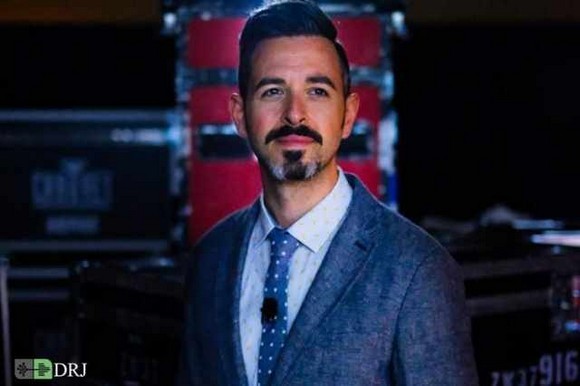
مصاحبه با مدیرعامل و بنیانگذار استارتاپ Moz
گفت و گو / استارت آپ

آشنایی با استارت آپ های حوزه مدیریت آب
استارت آپ

راه اندازی ۷۰ استارت آپ توسط نخبگان ایرانی
استارت آپ

معرفی هشت استارتآپ موفق ایرانی در حوزه فینتک
استارت آپ

اولین مرورگر شرعی دنیا
استارت آپ
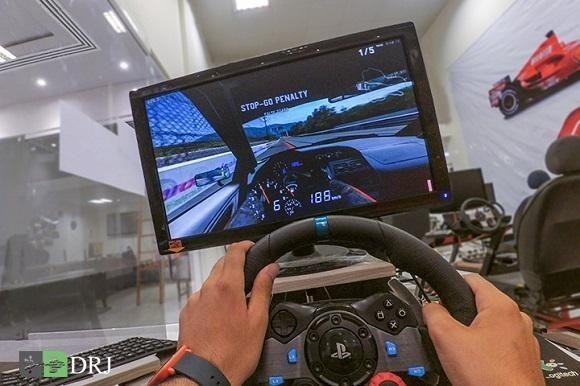
از صفر تا پیست
استارت آپ

معرفی برترین استارتاپهای CES 2019
اخبار / استارت آپ
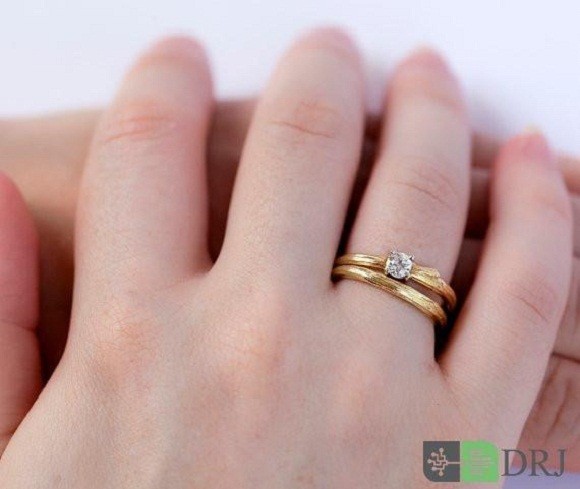
ازدواج با فرد ثروتمند یا خوش اخلاق
سبک زندگی / برترین ها

هدف از تشکیل خانواده چیست
سبک زندگی

اول عاشق شویم، بعد ازدواج کنیم
سبک زندگی

خانواده چیست
سبک زندگی

مشاوره خانواده چیست؟
سبک زندگی

اولویتهای پسانداز خانواده چیست؟
سبک زندگی

هزینه های خانواده چیست؟
سبک زندگی

راهکار بیشتر حرف زدن اعضای خانواده چیست؟
سبک زندگی

چرخه زندگی و خانواده چیست؟
سبک زندگی

اهداف و اصول تشکیل خانواده
سبک زندگی

آموزش جنسی نادرست به سبک خانم جلسه ای
سبک زندگی

لطفا تماشاچی آزار زنان نباشید!
سبک زندگی

کودک آزاری؛ از نشانهها و دلایل تا درمان
گزارش / سبک زندگی / پرورش کودکان

روش های تعیین هدف و مسیر زندگی برای رسیدن به موفقیت
سبک زندگی
مجله اینترنتی دیپروتد نشریه مجازی بر بستر اینترنت به مسائل آموزشی و مقالات پیرامون کسب وکار های نوپا یا استارت آپ ها و سبک زندگی است فعالیت و محتوای مطالب ارائه شده در سایت همه بیشتر در حوزه مدیریت، کارآفرینی ، روانشناسی ،اقتصادی و فناوری اطلاعات است نام اصلی دیپروتد "ریشه های عمیق " با مجوز رسمی از هیات نظارت برمطبوعات مشغول به فعالیت است
ما را در شبکه های اجتماعی دنبال کنید
تمامی حقوق برای سایت فوق محفوط است.
S-TECH: ایرانی توانمند | Powered by: مجله اینترنتی دیپروتد
